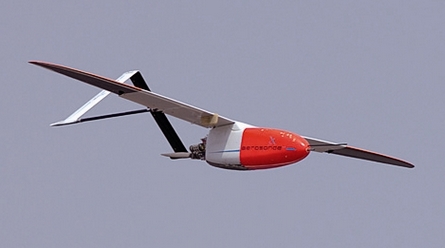An AAI-built and -owned Aerosonde Mk3 unmanned aircraft was intentionally ditched into the Atlantic Ocean off North Carolina on 3 November after taking an unprecedented close-up look at a Category 1 hurricane for the US National Oceanic and Atmospheric Administration (NOAA) during a 17.5h mission.
NASA officials, who handled satellite control links for the mission from the Wallops Flight Facility in Virginia, say AAI technicians launched the 2.9m (9.5ft)-wingspan gasoline-powered unmanned aircraft from a truck at 2:08pm on Friday afternoon (2 November).
The $35,000 aircraft then flew southeast for 8h, targeting the core of Hurricane Noel, which at the time was located 400km (215nm) off the coast of North Carolina. According to AAI, the Aerosonde cruises at 40-60kt (75-110km/h) and can fly as high as 15,000ft (4,500m) for as long as 30h on 6litres (1.6USgal) of fuel.

© AAI
NASA said the Aerosonde recorded winds exceeding 70kt (80mph) within the hurricane and ultimately spent 7.5h in the “storm environment”, flying as low as 300ft above the ocean surface in the eye of the hurricane to gather data, which was sent to NOAA’s National Hurricane Center in Miami, Florida.
Rather than saving enough fuel to return home, which would have meant staying within the storm’s core for about an hour, NOAA decided to sacrifice the aircraft and take data until the fuel was exhausted.
Joe Cione, a hurricane research scientist for NOAA, says the mission was successful on several fronts, including its unprecedented low-altitude loitering in the storm and coordinating temperature, pressure, humidity and windspeed measurements with sensors dropped by a P-3 Orion orbiting above.
AAI Aerosonde director of business development Peter Bale says that “in the name of science and better understanding of these large unpredictable storms, we felt it was our duty to ride out the storm. The information gathered in this critical area of the unknown, low inside the hurricane will be used to save lives and assist in protecting property”
Bale supervised the UAV for the duration of the mission. He says the flight “opens the door to areas of observation that can never be entered into by conventional manned assets, thus showing the true capability of these aircraft operating in a true dirty and dangerous environment.”
Source: FlightGlobal.com























